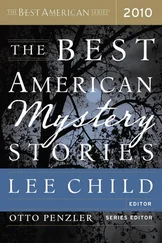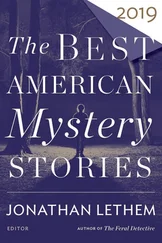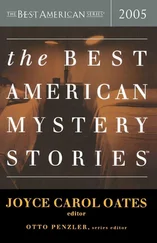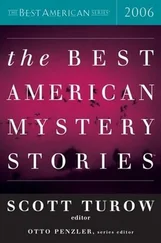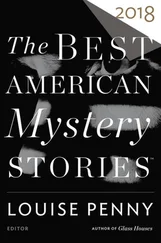This story may be thematically similar to my novel The Chimney Sweeper, in that both deal with violence that erupts when their young male protagonists face sudden, unexpected sexual confusion. I would like to think that sex and violence in my stories are inextricably linked, so that you could not remove one without the other. Since I am not a violent person by nature, it is a mystery to me where this impetus comes from in my stories. However, it is almost certainly related to my own identity as a gay man, which developed during my adolescence, during which I was simultaneously indulging my interest in horror, fantasy, science fiction, and mysteries.
I grew up in Laramie, Wyoming, where the only information I could find about gay people like me was in the Albany County Public Library (where I worked as a book shelver) and at the Coe Library on the campus of the University of Wyoming. Laramie, as everyone knows, is the town where Matt Shepard was murdered because he was gay. Although I was out of the closet to my closest friends from the age of fifteen, I never felt personally threatened by my environment. Still, it gives me pause to consider that Matt’s murderers are fellow graduates of Laramie Senior High School. The violence they perpetrated on Matt was certainly gratuitous, and it is ironic to me that it is also representative of what I’ve written about — the unreasonable, unwarranted, and sadistic violence that can easily manifest itself when certain young men feel threatened by the very existence of someone who is sexually different from them.
“After You’ve Gone” is the result of numerous inputs, including those aforementioned. The initial spark was a passage in a story by Robert W. Chambers, “The Repairer of Reputations,” written in the 1890s but set in a future New York of 1920:
In the following winter began the agitation for the repeal of the laws prohibiting suicide which bore its final fruit in the month of April, 20, when the first Government Lethal Chamber was opened on Washington Square.
I wanted to write a tale in which a government agent of that weird future goes around helping people commit suicide. I was going to call it “The GAS Man,” with GAS standing for government-assisted suicide. This evolved into the rogue agent of “After You’ve Gone,” to whom I now needed to supply some kind of motivation. I got to thinking, naturally, about Dr. Jack Kevorkian, the death-obsessed pathologist who creatively assisted a number of suicides of the terminally ill and is currently in prison on murder charges. What if his own motives were not so altruistic? What if he, quite simply, got off on it? The many disturbing newspaper accounts of inexplicable police suicides (in New York City), usually by male officers who had not quite measured up, helped me develop the “victim” of my assisted-suicide fiend. Given my usual bent, sexual confusion (in one form or another) was bound to enter the story, and it serves here as a trigger for the violence (or whatever) is to come.
Born in New Orleans, O’Neil De Nouxis a former homicide detective and organized-crime investigator. He has also worked as a private investigator, U.S. Army combat photographer, criminal intelligence analyst, journalist, magazine editor, and computer graphics designer. As a police officer, De Noux received seven commendations for solving difficult murder cases. In 1981 he was named Homicide Detective of the Year for the Jefferson Parish Sheriff’s Office. In 1989 he was proclaimed an expert witness on the homicide crime scene by the Criminal District Court in New Orleans.
Mr. De Noux’s published novels include Grim Reaper, The Big Kiss, Blue Orleans, Crescent City Kills, The Big Show and Hollow Point / The Mystery of Rochelle Marais.
O’Neil De Noux has also had over 150 short stories published in the United States, Canada, Denmark, England, France, Germany, Italy, Scotland, and Sweden. He teaches mystery writing at the University of New Orleans. He is the founding editor of two fiction magazines, Mystery Street and New Orleans Stories.
The inspiration for “Death on Denial” came when my wife, Debra Gray De Noux (editor of Erotic New Orleans anthology), peeked into the living room and said, “Are you watching Death on the Nile again?” It occurred to me that a play on words was called for. So I came up with a title first, which I’ve done often, then filled in the blanks, including a character who likes to watch Death on the Nile over and over again.
Pete Dexterlives on an island in Puget Sound with his dogs, Pansy and Fred, and his wife, Dian. He has just finished his sixth novel, Train. The Dexters have a daughter, Casey, who lives in Phoenix, Arizona, with a kid named Tate, and they have a cat named George, who is originally from Tucson. Due to bad behavior, he is not let out of the house (George, not Mr. Dexter).
“The Jeweler” was the first few pages of a novel, something I wrote to help myself make sense of a character. I was cutting it out of the manuscript later, which is what always happens in this kind of deal, when my brother Tom — who lives in Montana with his wife Jane and his daughters Molly, Annie, and the beautiful but eerie identical twins Phoebie and Elizabeth, and their dog, Gretta — when Tom called out of the clear, blue, Montana sky and said he thought I ought to write some short stories. So instead of throwing the pages away I sent them to my agent, Esther Newberg, who would like to have a dog but is allergic and has a cat instead, who obeys her instantly. But then, don’t we all?
A Southern California native, Tyler Diltsreceived his M.F.A. in fiction from California State University, Long Beach, where he now teaches writing in the English and Theater Arts Departments. He is a winner of the Associated Writing Programs’ Intro Award, and his short fiction has appeared in a number of literary journals, including RipRap, The Circle, and Puerto Del Sol. He recently completed his first novel, A King of Infinite Space, and is currently hard at work on his second, in which the nameless narrator of ‘Thug: Signification and the (De) Construction of Self’ makes a return appearance.
The protagonist of “Thug” is a character who circled around the edges of my writing consciousness for quite a while before finally finding his place. I had tried using him in a number of different ways, first as a supporting character in other people’s stories, then in his own. He never really seemed to fit, though. I just couldn’t find the right voice, the right tone, to give him his due. But he was always there, waiting patiently for his chance. I’d almost given up on him, when, during a particularly busy month in graduate school, in the course of which I found myself reading a profoundly odd juxtaposition of works by Dashiell Hammett, Raymond Chandler, Thomas Pynchon, David Foster Wallace, and a half-dozen or so postmodern literary theorists (the two new Jacques — Derrida and Lacan, and the rest of their gang), he bubbled back up to the surface of my awareness and asserted himself. Sitting down to write a critical essay on deconstruction for one of my classes, something else entirely emerged — the first lines of this story.
Mike Dooganis a third-generation Alaskan who lives in Anchorage with his wife of thirty-two years, Kathy. He writes a metro column for the Anchorage Daily News. He has won several journalism awards and shared in the newspaper’s 1989 Pulitzer Prize. Doogan is the author of two books of nonsense about Alaska and the editor of a collection of essays about living in the far north. ‘War Can Be Murder’ is his first mystery story.
I’ve been a Dashiell Hammett fan for as long as I can remember, and at one time did quite a bit of research into his service in Alaska with the U.S. Army during World War II. When Anchorage mystery writer Dana Stabenow asked me to write a story for her anthology The Mysterious North, which grew immediately out of the Left Coast Crime Conference, I thought immediately of Hammett.
Читать дальше






